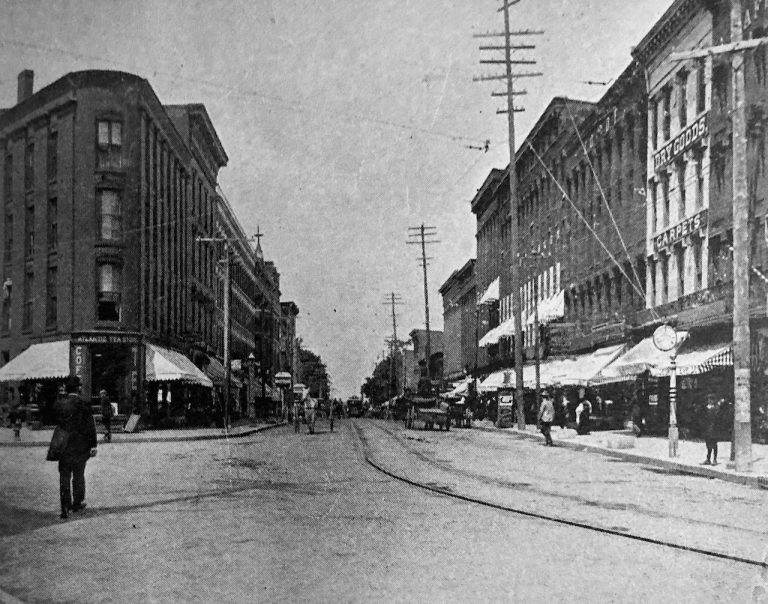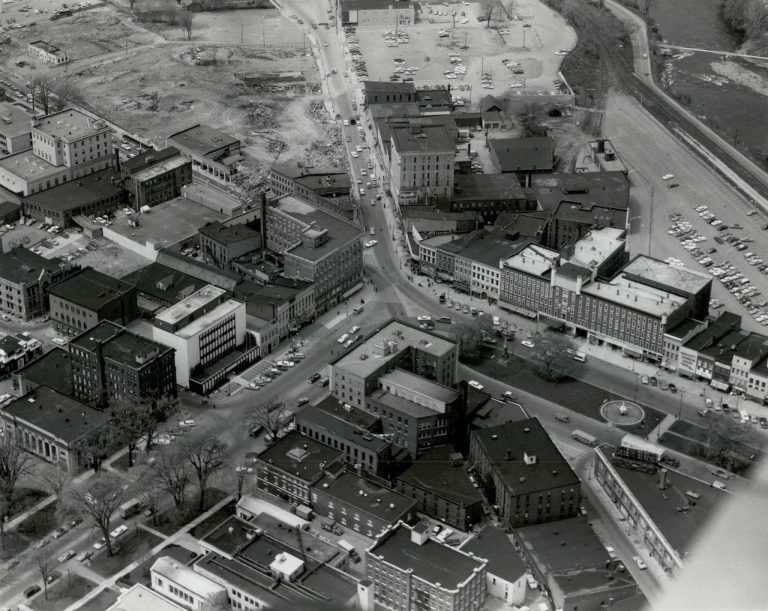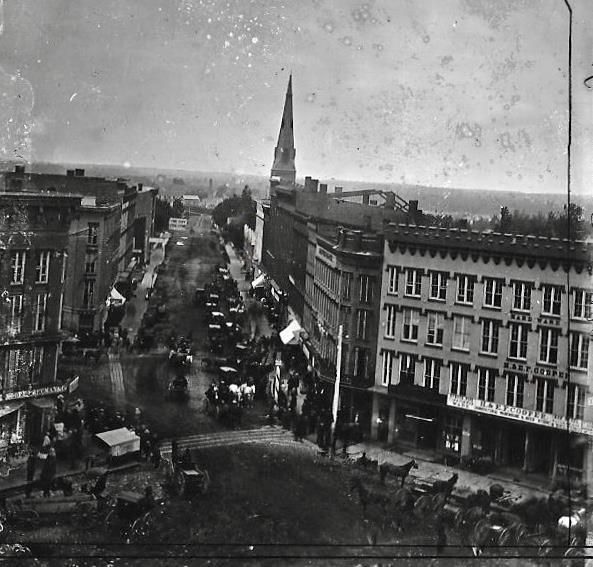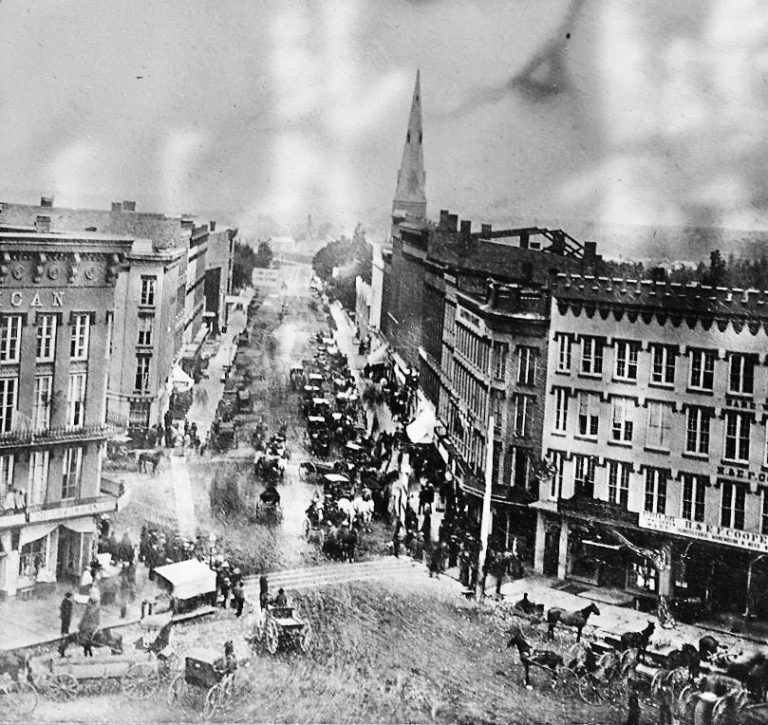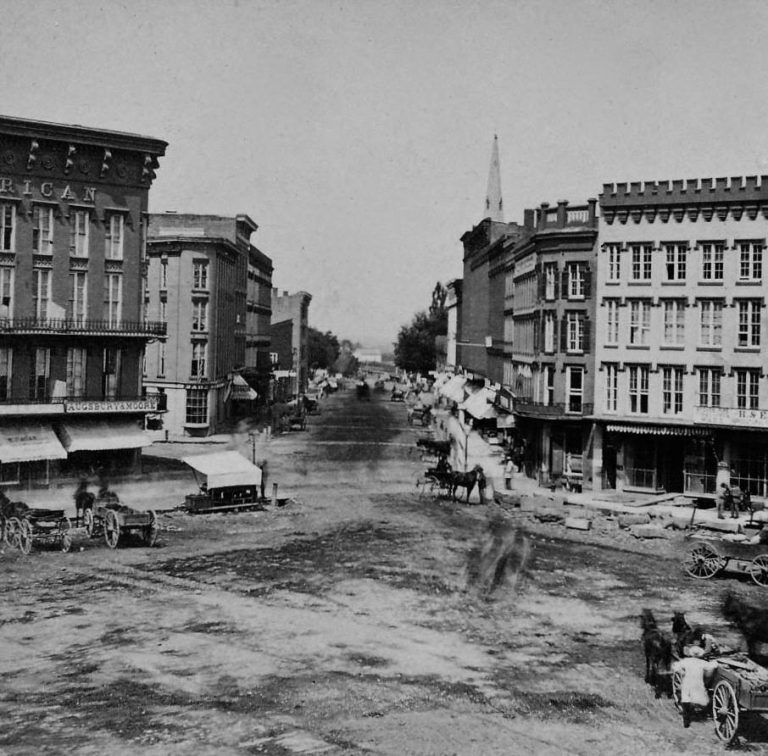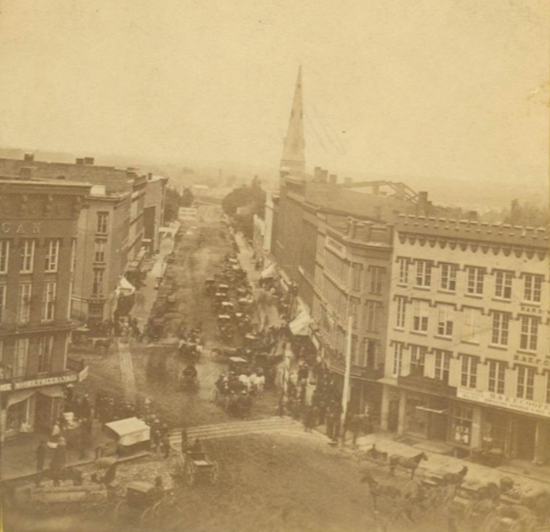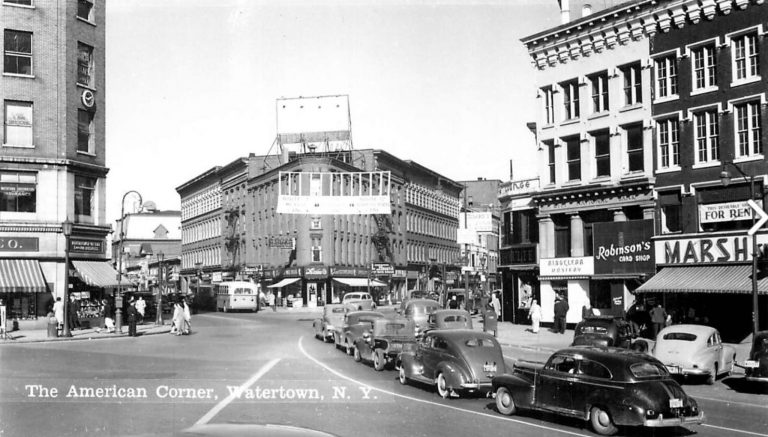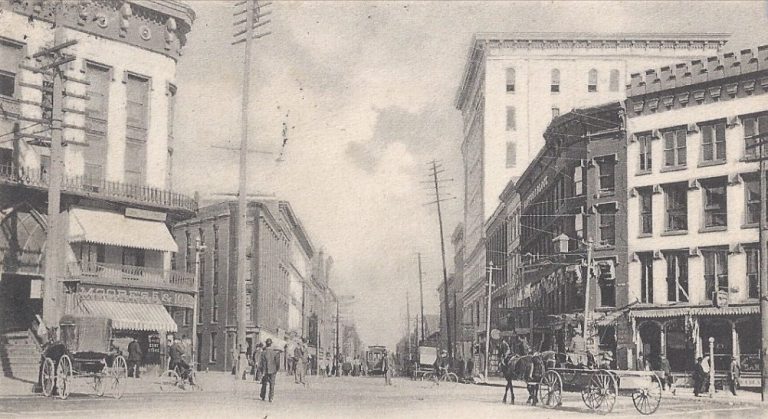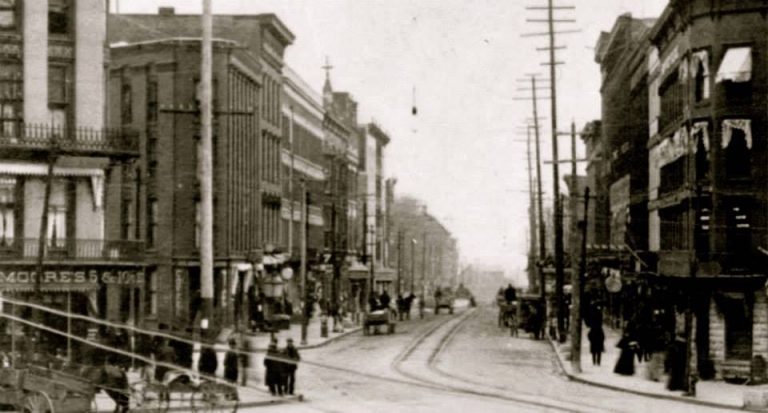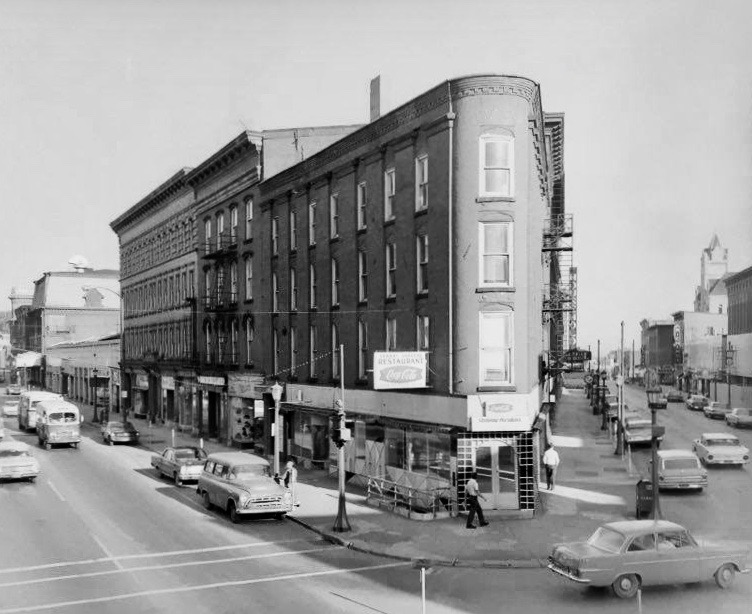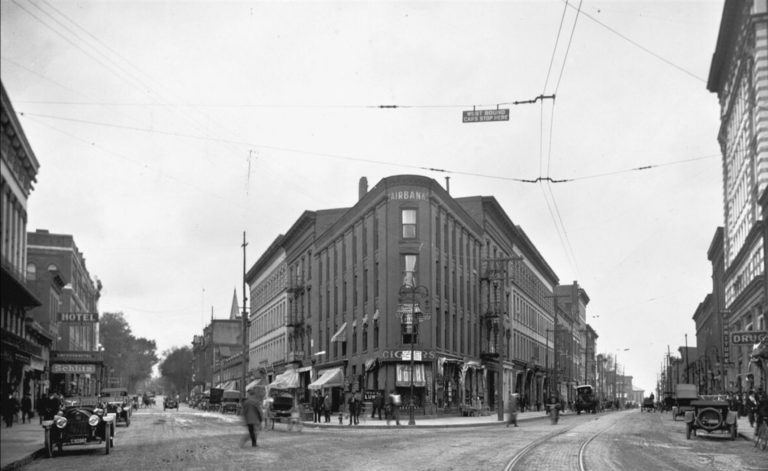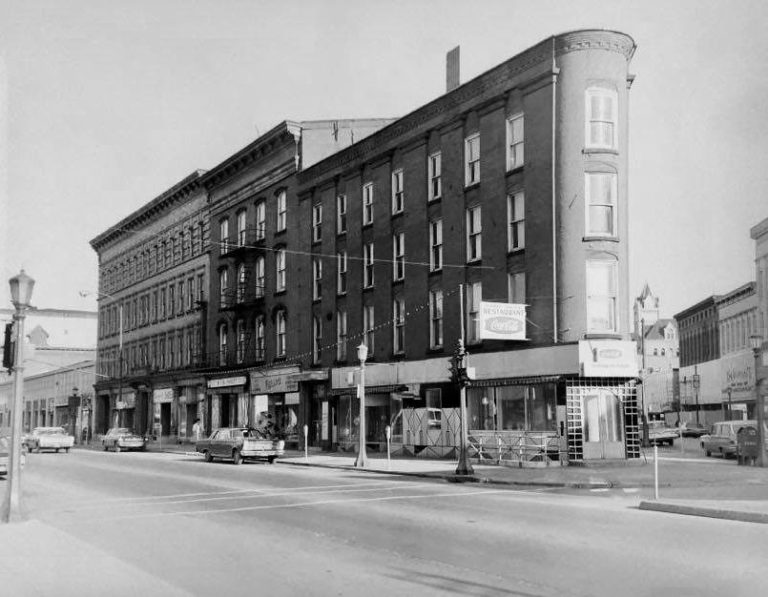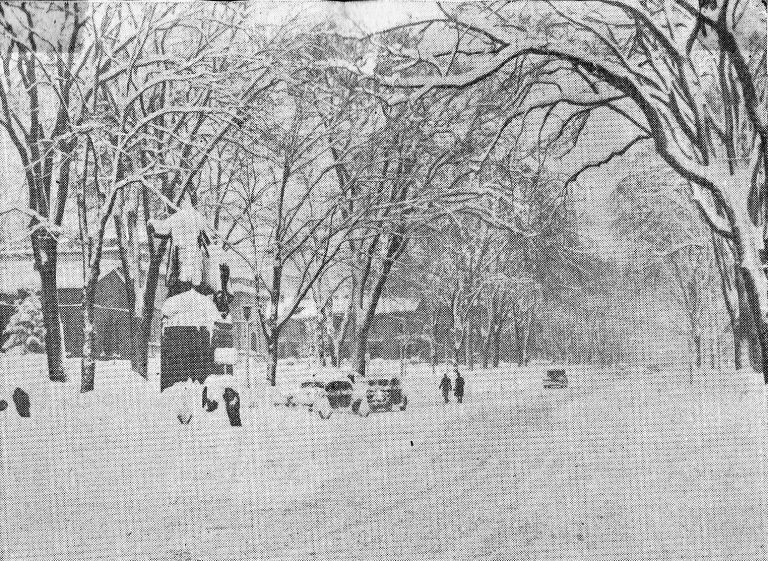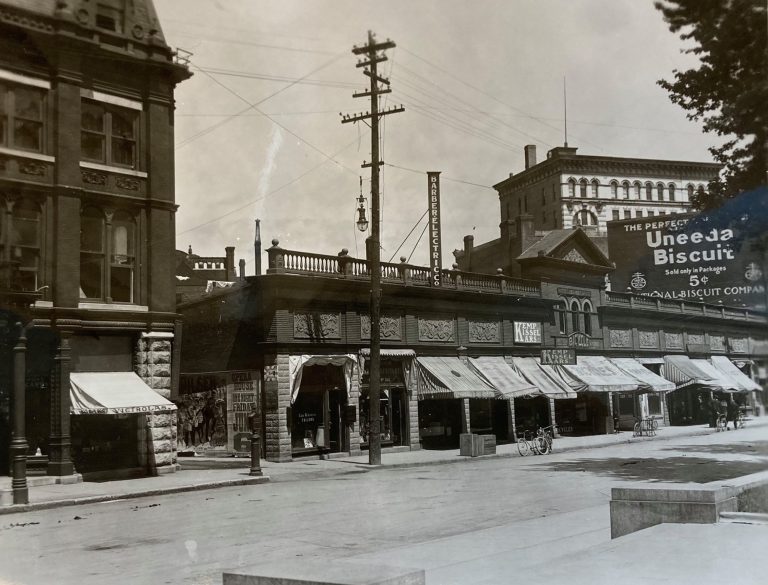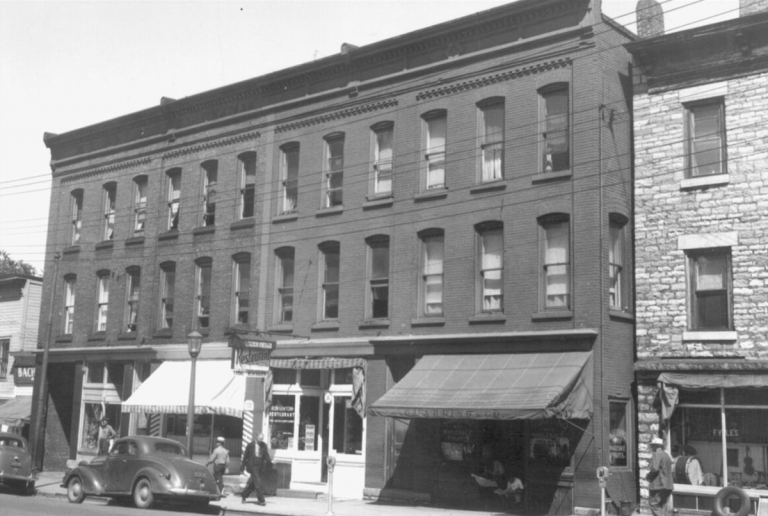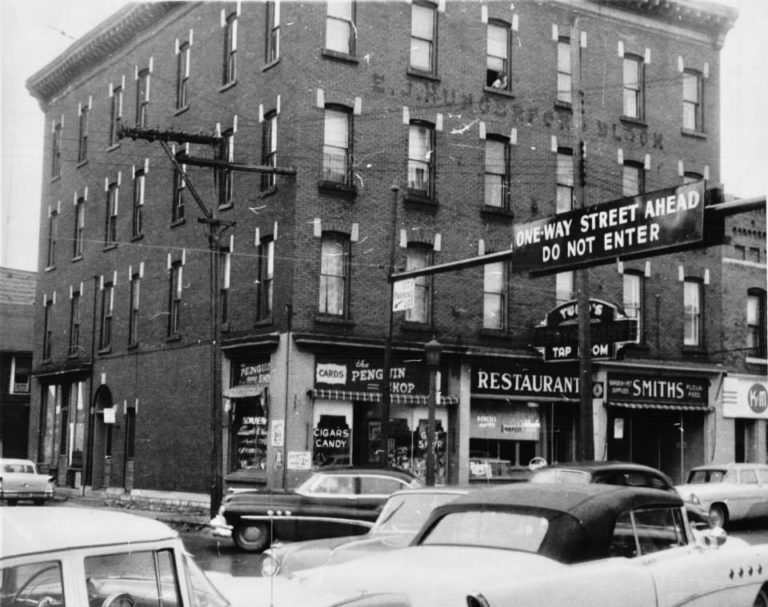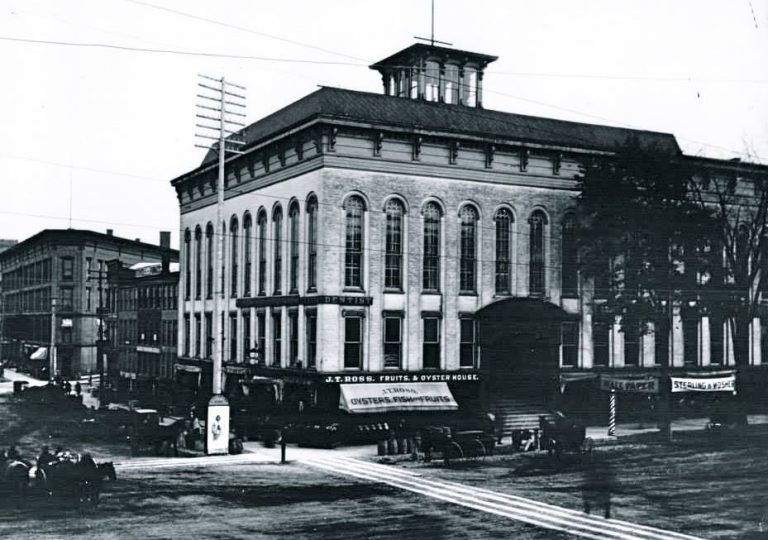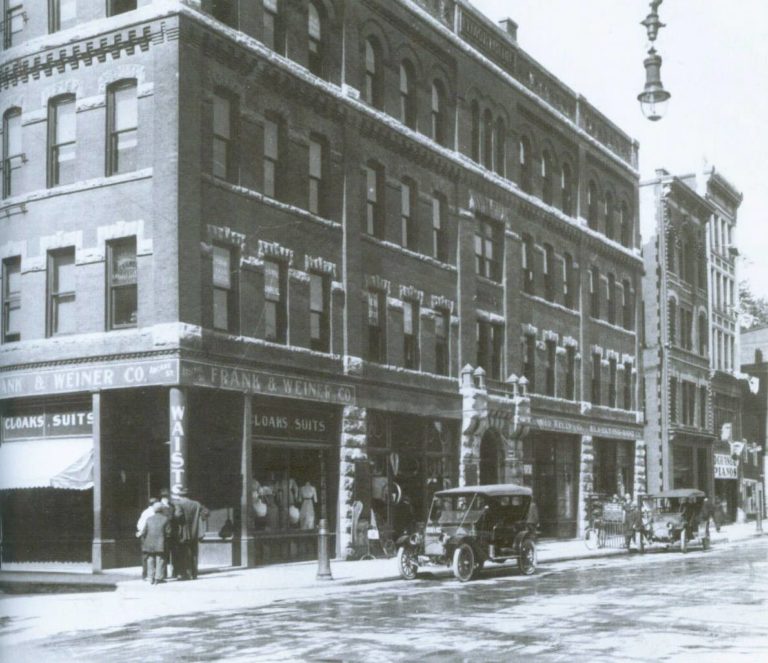The Fairbanks Building, aka The Flatiron, Downtown Watertown
Interestingly enough, Watertown’s Fairbanks Building preceded the Flatiron Building of New York City, from which it supposedly acquired its nickname. The Flatiron Building, NYC, was constructed in 1902, whereas the Fairbanks Building was completed much earlier and coined “flatiron” as early as 1892 when it underwent renovations.

The history of the Fairbanks building is challenging to decipher, partly because, according to one source, as noted later, there were THREE Fairbanks Buildings on Court and Arsenal Streets until at least 1906, when an article noted this.
Further complicating matters, the terms “Fairbanks Building” and “Fairbanks Block” seem to be used interchangeably, but according to one Watertown Daily Times article, the Fairbanks Block was located between the “Flatiron” Block and the Otis House. This was noted as such in 1892 when the Otis House leased the upper floors of the Fairbanks Block for expansion. These upper floors are presumably the same part of the Fairbanks Building that the Otis House fire of 1903 expanded to.
At that same time in 1892, the Times referred to the Fairbanks Building as “The old Fairbanks block of flatiron shape, which faces Public Square, Arsenal, and Court Streets, will be much improved this coming season.”
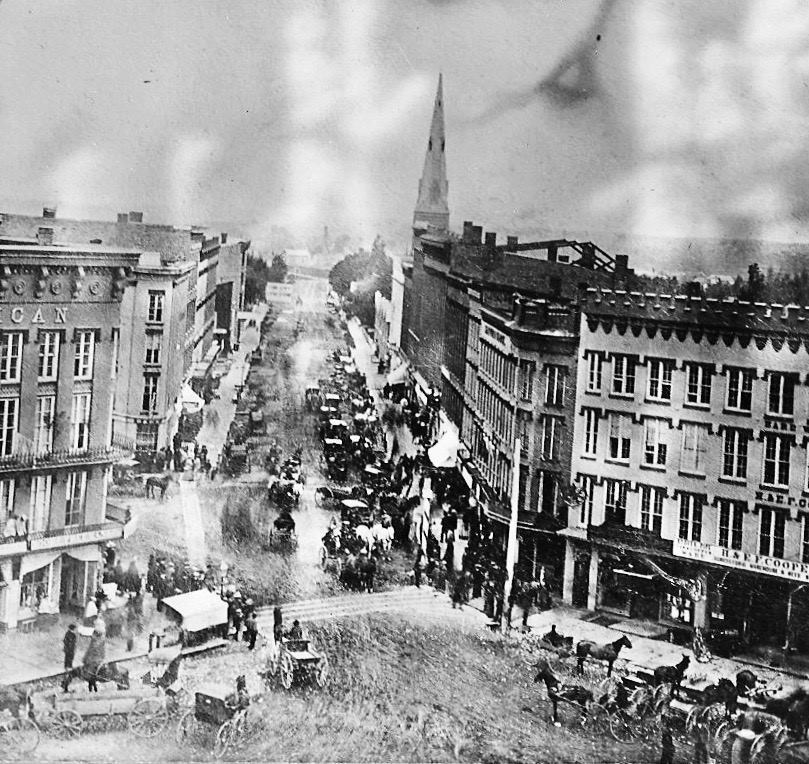
From a Watertown Daily Times article printed on May 18, 1878, preceding the construction of whatever Fairbanks building took place in 1887–
The property has a history which dates back to 1808, as it has been occupied for business purposes since that time. The lot occupied by the triangle block, also known as the Fairbanks Block, was bought by James Shields, Nicholas Low or Henry Coffeen, the writer does not know which, in the year above mentioned, and by him sold to Jason (sic, should be “Jasan”) Fairbanks in 1811.
Indeed, there are plenty of references to “a” Fairbanks Building’s existence before 1856, which has been cited in some sources as its year of construction, mostly as the Fairbanks Block, which was first referenced in printed news around 1848 by the New York Reformer. Whether it’s the same “Fairbanks Building” is unknown.
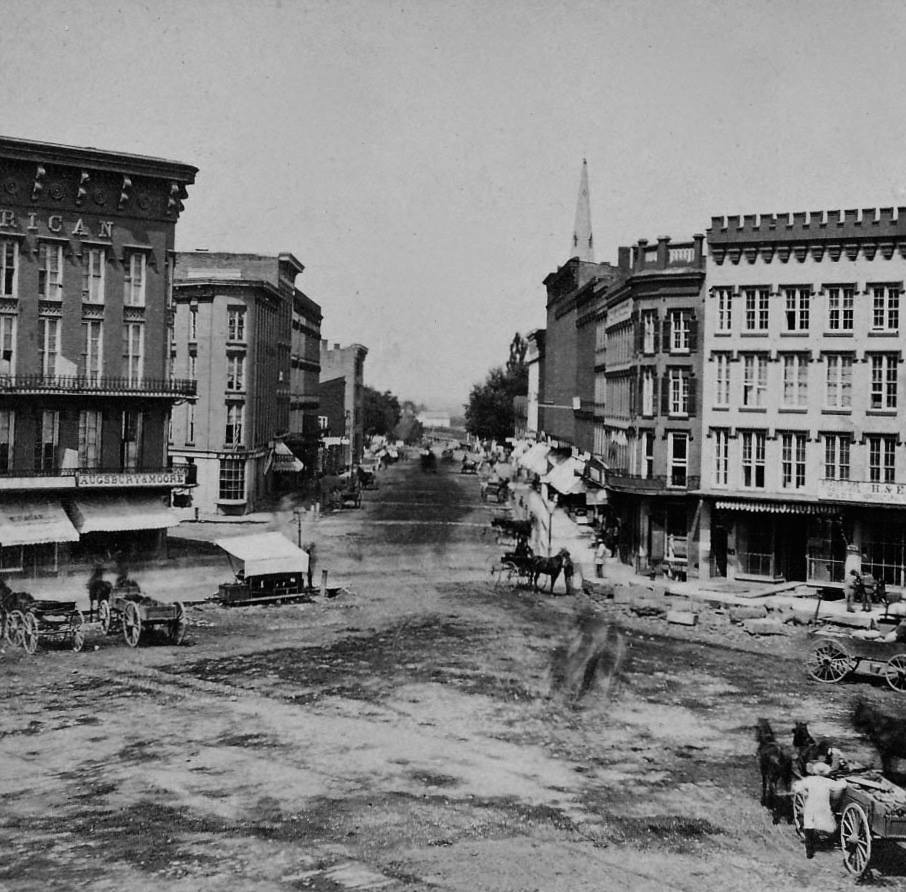
That brings up the question of exactly what was built in 1887 when a contract would be awarded to the firm of Plunkett, Jones, and Wetherby to construct a new Fairbanks Building. According to the Watertown Daily Times on June 2 of that year–
The plans for the new George R. Fairbanks building on Court Street have just been completed by Architect Griffin in this city. The block will be built in a style of architecture which is new in this section. It will contain three stories, a driveway, six flats and four offices.
The front of the building will be built with pressed brick of the finest quality and Gouverneur marble, and trimmed with galvanized iron cornice. The block will be 45 feet in height, 79 feet front and 60 feet deep, and common brick will be used in construction of the sides and back walls.
It seems a bit absurd to have TWO buildings called the Fairbanks Building, yet there’s no mention of differentiating the two, and the Fairbanks Building at the apex of Court and Arsenal Streets appears to be the same other than perhaps the work done in 1892. It very well could be they were referring to it as “another” building for George Fairbanks without its having a name at the time the article was printed. All this goes to ultimately say that, with all the name variations and lack of information from three books and two newspaper databases, a definitive construction date has not yet been identified.
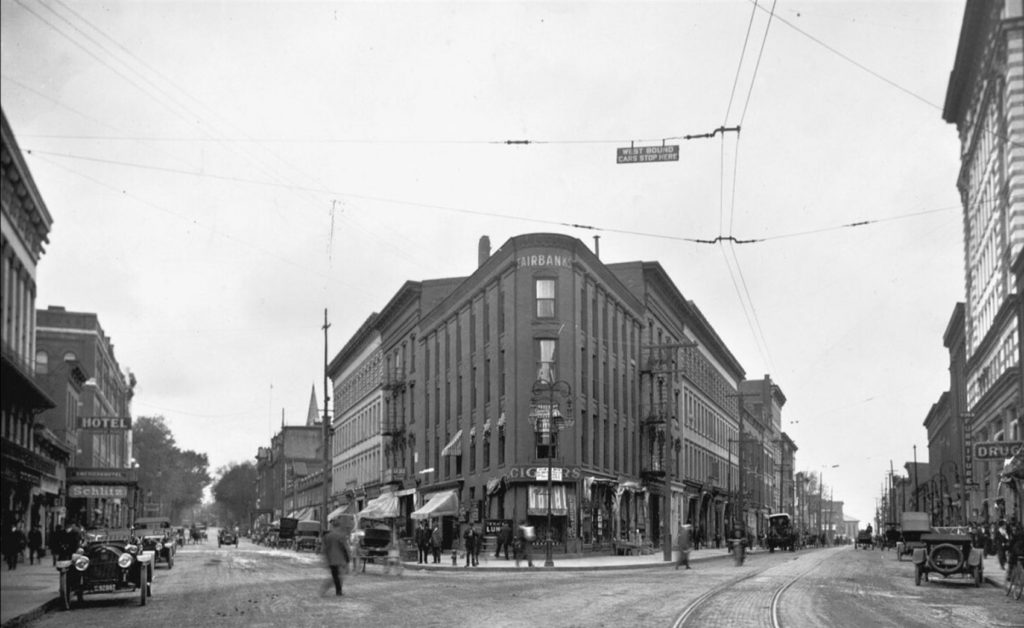
That being said, Major George Rainsford Fairbanks, son of Watertown’s earliest pioneers, Jasan and Mary (Massey) Fairbanks, served in the Civil War and lived the majority of his life in the southern United States. In Florida, he was Mayor of St. Augustine, served as a Senator, and also wrote a number of works of historical importance.
George Fairbanks’ home in Fernandina Beach, Florida, known as the Fairbanks House, was added to the National Register of Historic Places in 1973 and now operates as a bed and breakfast known by the same name. In his 1906 obituary, it was said that George owned the three Fairbanks buildings on Court & Arsenal Streets, but no further information was provided or found to clarify the dates of existence.
Upon a trip to Watertown in 1892, the Watertown Daily Times reported–
George R. Fairbanks, when he was here recently, announced that it was his intention to reconstruct the block owned by him and located on the corner of Court and Arsenal Streets. If this is done that particular block will be made one of the sightliest in the city and for proprietors and patrons of the stores therein, most convenient.
This resulted in façade work and an entrance at the apex of the building. As noted earlier, it was at this point the building was mentioned as the “old Fairbanks block of flatiron shape.”
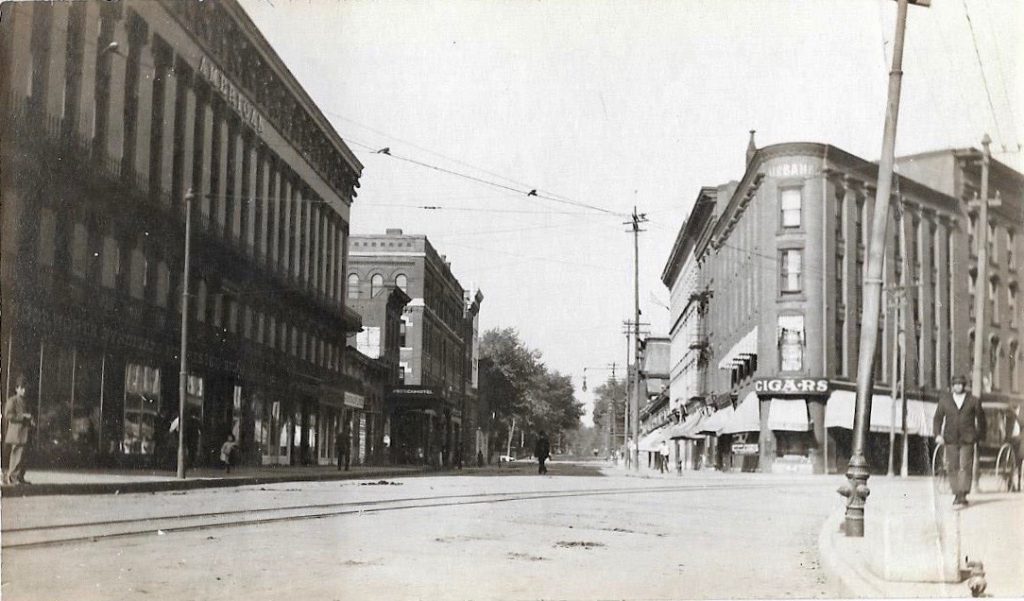
The Fairbanks Building was home to a variety of stores over the course of its existence, from cigar and hat shops to numerous restaurants, a grocery store in the basement in the 1800s, and Law’s “Cut Rate Drugs” pharmacy.
On September 8, 1966, the Watertown Daily Times reported
City Gets “Flatiron” Building – The latest urban renewal property acquisition has been made by the city through condemnation proceedings in the supreme court. The court has given the city title to the property at the corner of Court and Arsenal Streets owned by the Sullivan Estate.
The Sullivan property consisted of two parcels, including the Unity building. The property was years ago called the “Flatiron” building because of its shape. It faces on both Arsenal and Court Streets but carries Arsenal Street Addresses. The property will be razed in the final urban renewal demolition contract expected to be awarded a wrecking firm in late November or early December.
Today, the location of the former Fairbanks Building is known as Lachenauer Plaza, named after William G. Lachenauer, who served as Mayor of Watertown from 1956 – 1963.

Interesting Tidbit
In 1866, rope walker Tom Murphy crossed mid-air from the American Block to the Fairbanks Building on a high wire (rope). According to an article, he rolled a wheelbarrow on his rope, played the drum, and performed other stunts to the delight of the crowd-watching.

